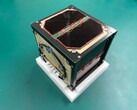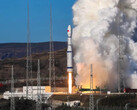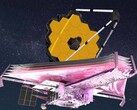The oceans, i.e. almost two thirds of the Earth's surface, absorb and store gigantic amounts of CO2. The plankton responsible for this produces half of our oxygen.
Exactly how many species are present in the world's oceans and where the populations are strongest, most endangered or most productive is far from certain.
Incidentally, the acronym PACE stands for Plankton, Aerosol, Clouds and Ecosystem. It is therefore high time for PACE to start its work in orbit and use newly developed instruments to investigate the smallest spectral ranges of light.
Where previously only a handful of different areas of light were recorded, 200 sections of the light spectrum can now be analyzed individually. This makes it possible to distinguish and observe marine flora species, to better understand their distribution and way of life - and, above all, to protect them.
The instruments, which cost almost 1 billion dollars, can also observe aerosols, which is to be achieved with the help of two polarimeters. These measure polarization, i.e. the orientation or rotation of light particles. While the sun emits chaotic, unpolarized light onto the earth, the tiny aerosols reflect polarized light and thus reveal themselves.
These tiny floating particles form clouds all over the world, which in turn are responsible for the fact that around 90 percent of solar radiation does not reach the earth's surface.
And the aim is not just to take a few pictures. After 2 days, PACE has scanned the entire earth. The result is a rough movie of the movements of aerosols, clouds and plankton of our entire planet.
New findings on better protection of the oceans, their significance for our climate and the clouds above them are eagerly awaited.
So the really expensive camera just has to take off. The launch of the Falcon 9 rocket is scheduled for February 7, 2024. The NASA blog on this can be found here.



















